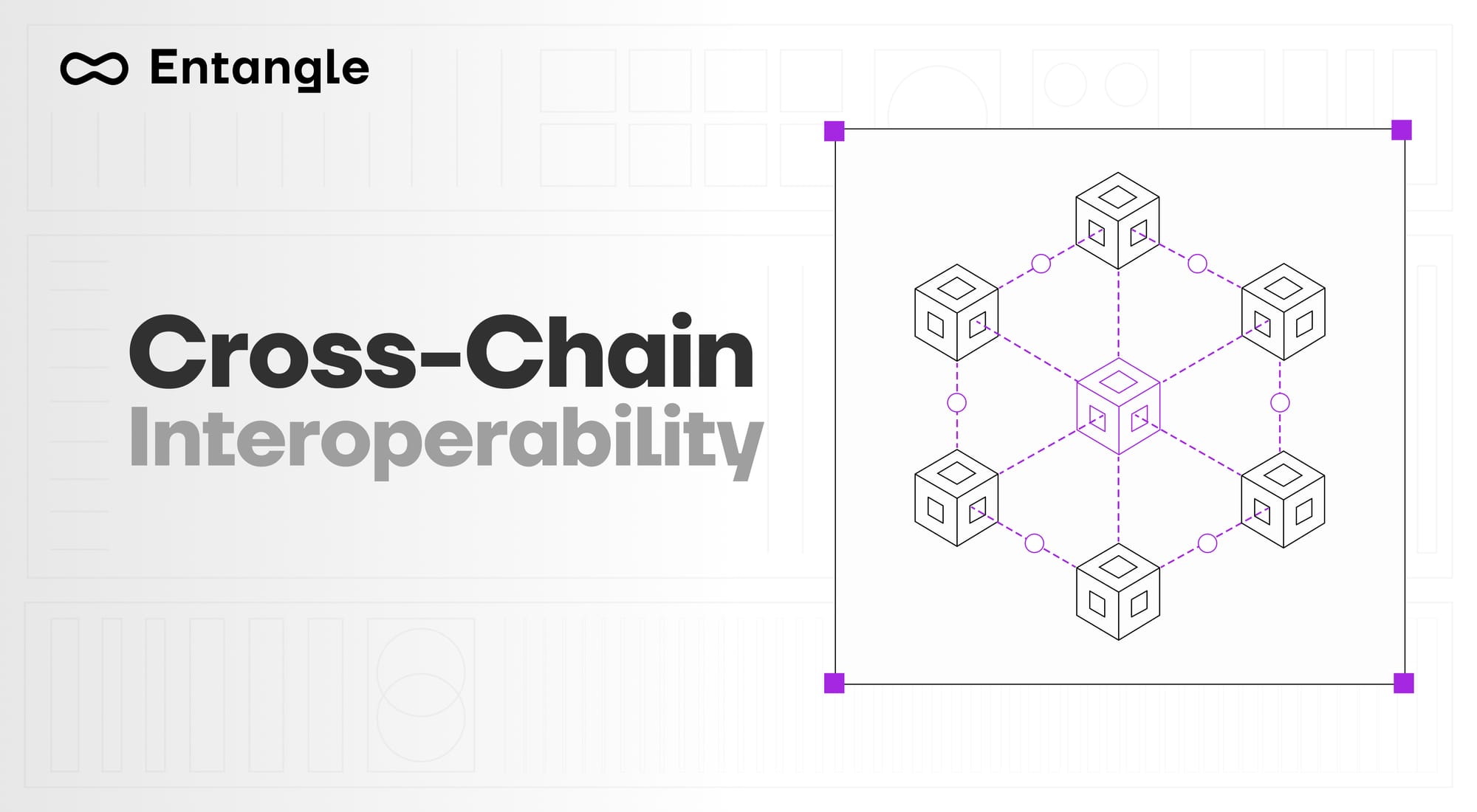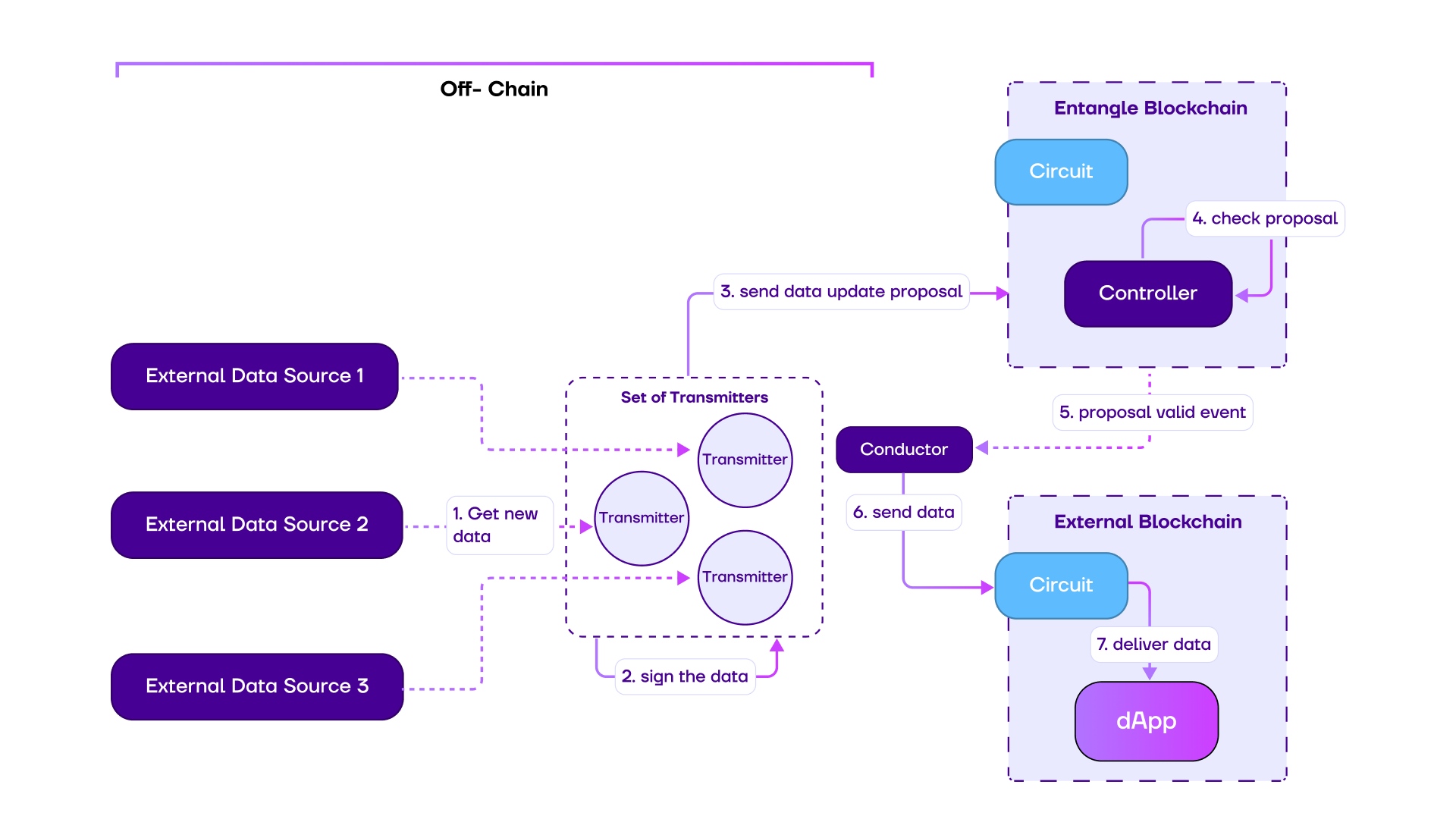Cross-Chain Interoperability

The rapid growth of the defi industry has led to the emergence of a large number of L1 and L2 blockchains. On the one hand, this has encouraged the influx of new users into the market. On the other hand, it has created the problem of siloed liquidity, where assets and trading volumes are spread across multiple networks, leading to price volatility and market inefficiencies. Liquidity fragmentation creates problems for users and traders who want seamless access to different markets and assets. Imagine for a moment that in DeFi all boundaries and rules are removed, liquidity can be moved from one protocol to another regardless of the network and native tokens.
Cross-chain interoperability is the ability of different blockchain networks to interact and exchange data. It enables the seamless transfer of assets and services across multiple blockchains, strengthening the decentralised financial ecosystem. This interoperability promotes inclusivity, allowing users to access a wider range of assets and services without intermediaries. It encourages collaboration and innovation between blockchain projects, leading to the development of more efficient and scalable solutions.
Interoperability is important because it enhances liquidity in the DeFi ecosystem, makes user experience much smoother and encourages protocols to scale. By connecting liquidity from different blockchains, users can access a larger pool of assets and trade with increased liquidity.
Several projects are now successfully working on interoperability. Entangle was created to expand on available solutions and solve the interoperability challenge in a tailored and cost-efficient way.
What parts do Entangle consist of?
Entangle is customizable & interoperable data infrastructure designed for Web3 and Institutions. In the core of the infrastructure is the Entangle Blockchain — L1 EVM-compatible chain, created with Cosmos SDK as the central communication hub where data undergoes storage, verification and processing.
Distributor
Any actor utilizing the Photon Messaging Layer of Entangle
Transmitters
Off-Chain machines aggregating data-feeds and cross-chain operation proposals from designated off-chain & on-chain sources to the Controller in an encoded and signed format.
Conductors
Off-chain machines run by Distributors which execute verified cross-chain proposals on destination blockchains as well as performing secondary security mechanisms.
Circuit
Gateway smart contract for the Photon Messaging Layer, with two functionalities:: Send & Receive:
Send can be called by distributors' smart contracts to send a cross-chain message.
Receive can obtain verified cross-chain operation proposals via Conductors to execute an operation by calling a smart contract of Distributors.
Deployed on any connected Blockchain.
Controller
Accepts and verifies signed operation proposals delivered by Keepers through consensus. Deployed uniquely on the Entangle Blockchain.
Having that, Entangle provides with 3 main solutions aka products:
- Data Feeds – oracle system for collecting and transmitting data, the validity of which is achieved by using an off-chain set of transmitters.
Any party can become a distributor and run his own price feed, and the data source can be either an object from the real world (data is collected and transmitted via API) or an object from the crypto space (data is collected and transmitted via RPC).
- Photon Messaging Protocol – A secure cross chain messaging system between EVM and non-EVM blockchains, allowing for a variety of use cases. Data validity is also achieved here by using a set of transmitters.
- Liquid Vaults – a native dApp built on the Entangle stack, optimizing liquidity through refinancing of yield-bearing assets. A user can stake their LP tokens via Liquid Vaults, receive a composable LSD token in return and use it for different DeFi strategies, including borrowing stablecoins against that LSDs.
Right now Entangle is running on a testnet, and more than 60+ projects have joined the Entangle ecosystem, including 10+ blockchains.
How Photon Messaging Protocol works
A user initiates a transaction, which prompts a dApp to request a cross-chain message through a Circuit Smart Contract. Transmitter Agents relay the request to the Controller Smart Contract on the Entangle Blockchain, where consensus is verified before an outbound request is made to the target chain. Following this, the Conductor Agent delivers the outbound request to the Circuit Smart Contract on the destination blockchain. The Circuit calls the designated smart contract of the dApp, thereby finalizing the cross-chain message transfer
How Web2 Data Feeds work

The data oracle is connected to external data sources. A set of Transmitters send data proposals to a Controller in the Entangle Blockchain. The Controller checks the proposal and sends it to a Conductor that delivers the data to a dApp through Circuit. The dApp performs an action based on the data.
How Price Feeds work
The following illustration demonstrates Transmitter Agents gathering and transmitting price data from diverse sources to the Price Oracle Contract on Entangle Blockchain. The Price Oracle Contract monitors for any substantial discrepancies and statistical anomalies, with the aim of generating a median price. The price is broadcasted to other blockchains once a significant deviation is observed.
What’s possible with Entangle?
The Entangle infrastructure enables a multitude of use cases, contributing to the overall health of the Web3 ecosystem and benefiting various sectors in particular. Some of the most relevant use cases are:
- Cross-chain DAO governance: token holders on all deployed protocol chains can vote, with votes aggregated when there are sufficient numbers, helping to ensure a smooth governance process and reducing gas costs;
- Cross-chain DEX trading: users intends to purchase an asset on chain “A” and encounters insufficient liquidity in its pool, the DEX can aggregate liquidity from pools on chain “B” and “C” to execute the trade with minimal slippage, instead of compelling the users to trade on a less desirable pool on сhain “A”;
- Cross-chain Lending & Borrowing: permitting users to deposit assets on chain “A” and borrow assets on chain “B”, thereby removing the necessity for bridging collateral;
Let’s see what Entangle can change for better on real world examples.
DAO governance with no boundaries
KommunitasDAO, a launchpad with its own Decentralized Autonomous Organization (DAO), can integrate Photon Messaging Layer to increase interoperability and enable cross-chain DAO voting: token holders on all deployed chains can vote, with votes aggregated when there are sufficient numbers, helping to ensure a smooth governance process and reduce gas costs.
Secure cross-chain framework
Entangle's infrastructure can help optimise the architecture of existing projects. For example, the cross-chain framework Wormhole can create an improved version of its product.
To elaborate on this, it is necessary to refer to the current Wormhole architecture and the cross-chain message mechanism.
Messages sent through the Wormhole core contracts are forwarded to the Guardians, who independently verify and approve the messages' authenticity.
The Verified Action Approvals ("VAAs") message sent by the Guardians is then passed by the relayer directly to the destination chain.
As a result of this architecture, Wormhole has already been attacked by hackers.
At the same time in Entangle, the message from Transmitter Agents pass the request to a smart contract controller on the Entangle blockchain. The Controller then performs a verification attempt using ECDSA cryptography and if this and the attempt is successful, only then is the message sent to the destination network.
In this way Entangle's infrastructure adds another step that greatly increases the security of the entire process.
Expanded Yield and Lending opportunities
Entangle currently offers 26 different price feeds across 10 blockchains, with a specialisation in derivative feeds such as the LSD and LP tokens.
With such custom price-feeds, yield otimisation protocols like Pendle can significantly expand the number of accepted assets to onboard new liquidity providers across the ecosystem.
For example, there are now only three liquidity pools from Camelot DEX on Pendle in the Arbitrum network.
However, on Camelot itself there are many more pools with a sufficiently high TVL.
Integration of Entangle's price feeds enables Pendle to significantly expand its marketplace services for users and allow them to re-use a large proportion of their LPs and LSDs in Pendle, ultimately, improving capital efficiency.
To sum up, Entangle is setting the stage to significantly enhance the DeFi landscape by tackling interoperability challenges head-on. Its innovative infrastructure and suite of products, including the Photon Messaging Protocol and Liquid Vaults, are designed to facilitate a seamless, efficient user experience across various blockchain ecosystems. As Entangle progresses with its testnet, the growing adoption and integration by a multitude of projects signal a promising shift towards a more interconnected and accessible future in DeFi.
About Entangle
Entangle is the first customisable & interoperable data infrastructure built for Web3 and Institutions. It resolves smart contract communication, liquidity and scalability challenges. Join unified Web3 Ecosystem with Liquid Vaults DApp, Photon Messaging Protocol, Web2 Connectivity and Custom Price Feeds.
Follow us: @EntangleFi | Learn more: Website | Join the community: Discord